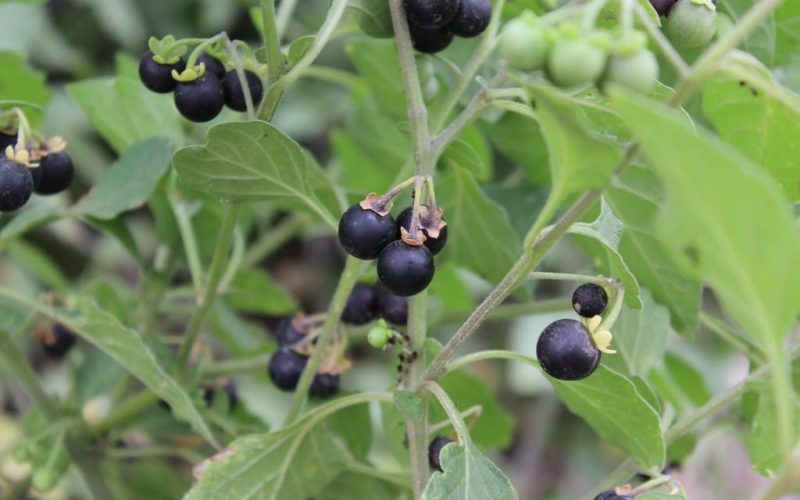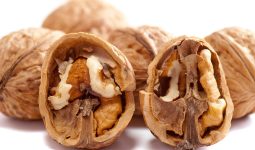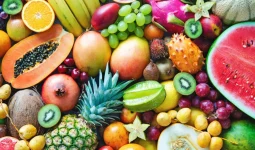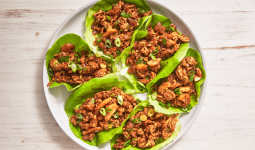Blue doesn’t appear on our plates very often, which is a genuine shame, in my opinion. There are many more blue savory foods than just blueberries.
Making something that is appealing to the eye as well as the palate can be entertaining at times.
These blue savory foods are exactly that bold, vibrant, and out there!
Our post roundup is for you if you’re seeking blue dishes to complete the popular.
These blue savory foods will be a hit no matter what you use them for! Let’s dive in!
1. Cookie Monster Ice Cream
Cookie Monster ice cream is first on our list of blue savory foods.
This colorful ice cream resembling the Cookie Monster is rich, delicious, and cookie-packed.
Store-bought cookies taste just as nice as those you would make yourself.
Escape the scorching summer sun with a generous scoop of this colorful cookie monster ice cream.
It’s very addictive and seriously blue. The crumbled-up cookies’ nutty texture holds its own against the rich ice cream. There won’t be any wet cookies, only mouthwatering bites.
2. Speck Blauer
The violet-blue globes on the old German heirloom plant, kohlrabi, are stunningly colored. It was first presented in 1914. It has maybe been referred to as a German turnip.
Whatever you want to call it, cabbage is a close relative of this. It has a flavor that is reminiscent of mashed-up broccoli and cabbage.
Both the bulb and the oblong leaves can be either raw or cooked.
3. Jenipapo Berries
Genipin, which generates an appetizing blue pigment, is found in jenipapo berries.
Once the fruit’s juice has been extracted, it can be combined with blueberries to make a blue cocktail or sweet jenipapo ice cream.
Fruit, milk, sugar, and gelatin are blended to make jenipapo mousse, which is then chilled until it solidifies.
These blue savory foods can be a dessert for a blue party or a cool summer treat.
4. Bluish Tomatoes Salsa
Bluish tomato salsa is rich in antioxidants and produces a sweet, tangy salsa when combined with finely chopped red onion, jalapeño pepper, and lime juice.
The vivid blue tomatoes give your party table color. Let your visitors enjoy the unusual, refreshing salsa by serving it with a variety of dippers, including tortilla chips, pita bread, or thinly sliced vegetables.
5. Kuli Corn
kuli corn is the darkest maize we know, with a nearly purple hue. Because of this, it has one of the greatest concentrations of anthocyanins compared to other types of maize.
It is an ancient type from the Andes highlands of Peru, and it is incredibly sweet and tasty.
6. Dutch Heritage Wheat
Dutch heritage wheat from Utrecht is known as Utrecht Blue Wheat.
It was created in the early 1900s and has gorgeous blue coupled with lengthy black bristles.
It works beautifully for weaving and flower arrangements because it is strong and lovely.
Although it can be eaten, it is difficult to thresh, so you might only want to use it for decoration.
7. Blue Milk Cap
A palatable mushroom is the indigo milk cap mushroom or Lactarius indigo. It is additionally frequently called the blue milk mushroom.
Natural blue food color is made from vivid blue pigment. It tastes similar to a portobello mushroom when you eat it.
Since it has a grainier texture than the portobello, it is recommended to cook this one.
Additionally, you can dehydrate these blue savory foods to use later in stews and soups.
8. Pansy Lake in the Thun
All pansies, including the breathtakingly blue Lake of Thun pansy, are edible. You can add them to salads to eat them right away.
In order to create a special sweet treat, candy them. This flower’s sepals, pistils, petals, and stamens are all edible.
9. Rosemary
Try the rosemary blossoms if you enjoy using rosemary to flavor your food.
Adding these blue savory foods to your olive oil gives it a unique flavor boost. You can add them to baked dishes or steep them in tea.
10. Blue Clarage
In the early 1900s, blue clarage corn first appeared in Ohio, in the United States.
Discover this heirloom variety; you’ll adore how sweeter it tastes than the standard yellow corn.
Additionally, it contains roughly twice as much digestible protein as other, more traditional maize varieties and is rich in antioxidants.
Have you ever eaten blue corn tortilla chips or tortillas? They taste great!
11. Sunshine Blueberries
The medium-sized, gorgeous blueberries known as sunshine blueberries are next on our list of best blue savory foods.
They have a sweet flavor and a lot of bioflavonoids. They are simple to cultivate in regions with mild winters, making for a more attractive garden where you can grow a delicious snack.
12. Berry Saskatoon
These berries’ Saskatoon plants are also known as Juneberries or Shadbush.
They are a Canadian native and are found all over North America. Get these beneficial blue savory foods to consume more flavonoids and anthocyanins.
They also have a lot of fiber, vitamin C, calcium, and manganese.
Saskatoon berries are juicy and sweet and have a slight almond flavor that enhances their already wonderful flavor.
13. Wonderberries
Wonderberries have a delicious flavor. These tiny blue-purple fruits taste great, both raw and cooked.
An abundance of antioxidants and anthocyanins are present in this ancestral plant.
Vitamin A is also abundant in it. Only consume completely ripe berries, which will be dark blue to black in color.
You can also consume the leaves for a little more nourishment and vitamin K.
14. Spinosa Prunus
Blackthorn is another name for the berries of the prunus Spinosa. The best uses for them are baking and boiling.
Although it tastes acidic when it is raw, the meat is palatable.
The berries’ seeds, on the other hand, are lethal. You must take them out before consuming the berry’s flesh.
15. Powder Blue Berry
The powdered blue finish it develops as it ripens is what gives the powder blue blueberry its name.
They spread out in enormous groups. You’ll be rewarded with a lovely blueberry flavor when you try them in addition to all that nourishment from blueberry superfruit!
16. Kew Blue Beans
This rare kind of pole snap bean originated in England and spread to the Pacific Northwest.
They are flat and purple, giving your meals a lovely color. The best part is that they taste great whether you eat them raw or cooked.
17. Pumpkin of Jarrahdale
The Jarrahdale pumpkin’s gorgeous slate-blue color makes it ideal for display, which is one of its best qualities.
This unusual species is from Australia and has a golden-orange inside, delicate texture, and sweet flavor.
It is so adaptable that you can use it in almost anything, including soups, stews, and pies.
18. Honeysuckle
Please be aware that honeysuckle vines are often not edible before you start munching on any in your house or garden.
But before you can eat the berries from this plant, make sure you have a delicious berry honeysuckle.
19. Blackberry Himalaya
The Himalayan blackberry, which is indigenous to Armenia and Northern Iran, expands swiftly in sunny places. It is considered invasive because it kills native trees and shrubs.
The good news is that berry pickers adore the fruits and find them to be fairly palatable. They are available in tinned, frozen, or fresh form.
20. Huckleberry Cascade
Native Americans ate these cascading huckleberries. If you have the chance to try these blue savory foods, you won’t be disappointed.
They’d also look lovely as a centerpiece for a fall table. Pick these berries, and you’ll get a healthy serving of vitamins B and C and antioxidants.
21. Blueberry Brightwell
The Brightwell is another blueberry you ought to try. It’s a Rabbiteye blueberry cultivar.
This extremely productive crop thrives in the Southern US and produces tasty, brilliant blue berries.
You can have a gorgeous garden and all the berry nutrients you want if you grow them yourself!
22. Brad’s Atomic Grape Tomato
These vibrant grape tomatoes have an extended shape that makes them quite distinctive.
With a green interior that turns red when mature, they have lavender and purple streaks.
Because of the sweetness they produce, Wild Boar Farms won best-in-show honors at the 2017 National Heirloom Expo.
The sweet, tangy, and acidic flavors of Brad’s atomic grape tomatoes are something you must try if you can find them.
These blue savory foods add beauty to your meal and are a great source of antioxidants, vitamins A and C, and other nutrients.
23. Blackberry Bluray
They are really big and delightful. This berries’ pale blue color and reputation for not shattering.
The largest blueberries available are truly a pleasure for your taste senses and provide your body with all the benefits that blueberries are well known for.
24. Blueberry Variety
This variety of the most popular blue superfruit grows well in cooler climes. It first appeared in 1934.
These tasty blueberries have been providing nutrition to consumers through their antioxidants for almost a century.
They are naturally sweet to tart and work well for baking pies and snacking on by the handful.
Blueberries are a great option if you’re seeking healthy blue savory foods you can grab on the go.
25. Fruit Blue Sausage
Because it is long and blue, some people refer to it as the “dead man’s finger,” although blue sausage fruit sounds far tastier.
There isn’t any meat in this dish; instead, there is a distinctive blue fruit from Northeastern India.
It has long been a favorite among the locals due to its pulpy freshness and slightly melon- and cucumber-like flavor.
The center of that blue fruit, which has an inedible blue skin, is a good source of phosphorus and fatty acids.
26. Olive Blue
Blue olives, another variety of Ceylon olives, originate in Sri Lanka. Olives with blue skin are practically sphere-like in shape. Green and firm inside is the flesh.
Unripe fruits have a more astringent flavor, whilst ripe fruits have a slightly sour flavor.
They are frequently consumed as pickles or seasoned with salt and chili.
27. Australian Blue Marble Tree
The Australian blue marble tree fruit is named by the way it looks, which resembles dazzling, vivid blue marbles.
The fruit alone is edible, but not the rest. The nuts were once exchanged and used to make jewelry.
These blue savory foods have also been utilized in religious rituals and as medicine. Be prepared for the sour taste if you get the chance to consume them.
28. Java Banana in Blue
The Southeast Asian blue java banana is frequently called the “ice cream banana” because of its distinctive flavor and texture, reminiscent of a custardy vanilla confection.
If you have trouble eating enough fruit, look for this one because it has a delicious profile and is a fantastic source of fiber and vitamin C, which helps with immunity and digestion.
29. Blue Adirondack Potatoes
Blue Adirondack potatoes are on our list of blue savory foods.
By using genetic engineering, Walter de Jong and his Cornell friends developed the Adirondack blue potato. It was released in 2003 and quickly gained popularity in Northeastern North America.
It is entirely blue, displaying health-promoting anthocyanins that may truly spruce up your standard potato recipes. (Numerous potatoes are both blue and purple, and they are all excellent.
30. Snap Bean in Blue Coco
Tired of eating green beans? The color of blue coco snap beans is a vibrant purple. These young, purple pods turn green when you boil them.
However, you can also consume her blue savory foods raw to add vibrant color to salads.
It is a French antique that dates back to 1775. The name refers to the blue and coco-colored seed pods.
31. Kale in Portuguese
Portuguese kale is another kale kind that is good for you. It comes from Portugal, as the name would imply, and is a great specialty because of its mild flavor and soft texture.
Deep blue-green hues can be seen on the paddle-shaped leaves. This blue variety of Portuguese kale will undoubtedly please you if you’re sick of other sorts.
32. Blue Carrot
This is the last on our list of blue savory foods. Carrots called “Blue Carrots” used to all be blue or purple.
They were first grown on the territory that is today referred to as Afghanistan. Yes, there are many other colors of carrots, but the blue ones, often known as indigo carrots, have a lot of blue anthocyanins.
Additionally, they are supposed to improve immunological function, vision, and memory. This carrot will add excitement to your meals.
Conclusion
Naturally, it may be difficult to find blue savory foods, but that doesn’t mean you can’t eat tasty blue dishes.
You can still wow your guests with a magnificent selection of blue dishes that look amazing and taste even better, whether it’s a blue-themed birthday or baby shower.
At a color-themed party, serving delectable blue savory foods might impress your guests and encourage them to stay longer.
From Cookie Monster ice cream to sweet delicacies listed above on our blog, this category of blue savory foods has something for everyone.
Therefore, with a little imagination, pamper and tempt your visitors’ palates with vibrant, mouthwatering blue dishes.
Give them a try, and they are too gorgeous to eat! They are stunning, and each one is distinctive.
Enjoy!!








